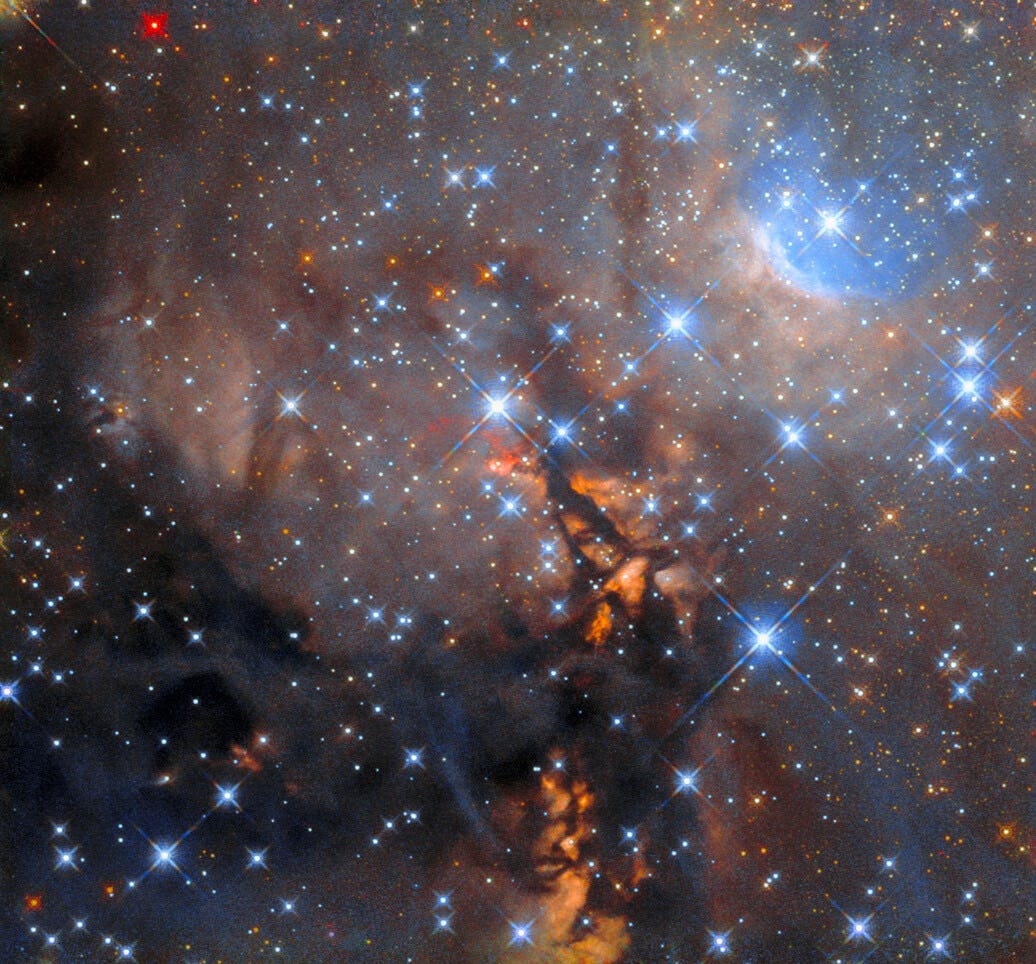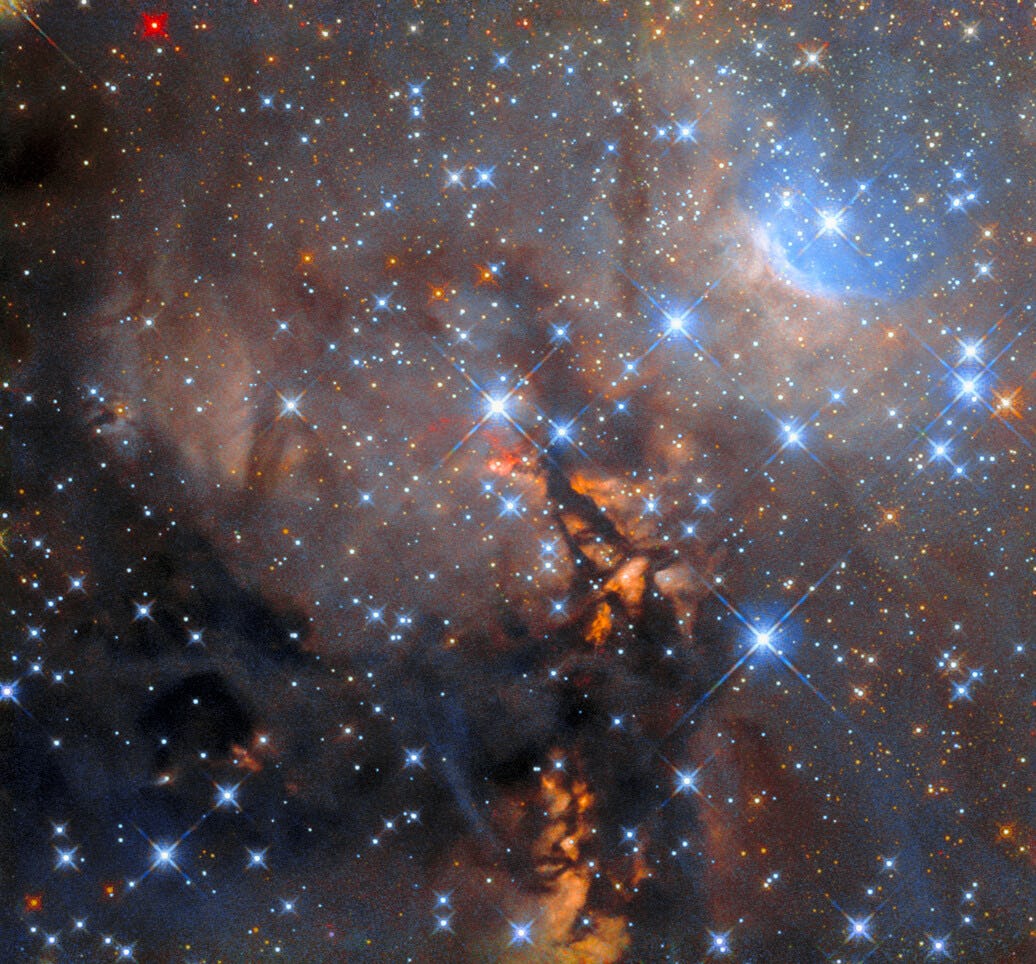
Behind a cloud of dust in this Hubble Space Telescope photo hides a young star with a very cool superpower. The protostar OH-39988-1.26 is what’s called an astrophysical maser: it emits beams like a giant, naturally-occurring laser — except those beams are in the extremely long wavelengths of microwave radiation, instead of the light our eyes can see (maser is an acronym for Microwave Amplification by Stimulation Emission of Radiation).
How to Make a Maser in Space

Here’s how it works. In areas like the one in this Hubble photo, young stars are blasting radiation into dense clouds of gas and dust. That means photons are constantly colliding with atoms. And if the photon happens to be the right wavelength, the atom absorbs it. The extra energy boosts electrons into faster, more energetic orbits around the atom’s nucleus.
If a second photon happens along and bumps into the same atom, the atom will absorb it, too. But then the atom will blast both photons back out into space and then collapse back into its normal, low-energy state. Thanks to a quirk of quantum physics, the light emitted from the briefly excited atoms is all the same wavelength and pointed in the same direction. (Physicists call this property “coherence.”)
An astrophysical maser like OH-39988-1.26 produces coherent light, but it’s less coherent than the masers physicists build in their labs. Human-made lasers are designed with mirrors, resonant cavities, and other features to magnify and streamline the light. But astrophysical masers can be very bright, and they reveal useful information about the chemical makeup of the star-forming clouds that produce them.
Astrophysical masers can also happen (at different sizes) in the haloes of comets, in the aurora-lit clouds of Jupiter's northern hemisphere, and in the area around actively feeding supermassive black holes.







